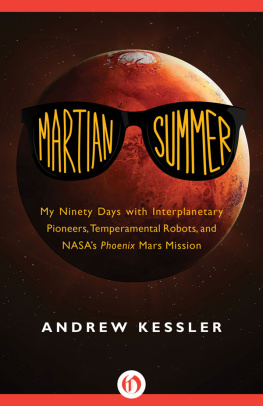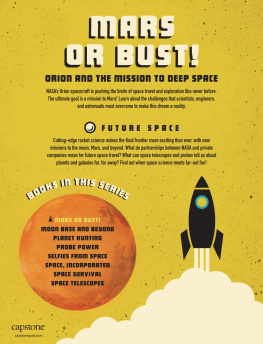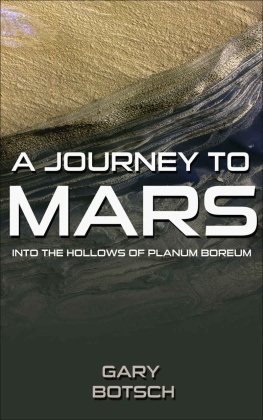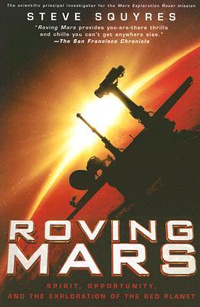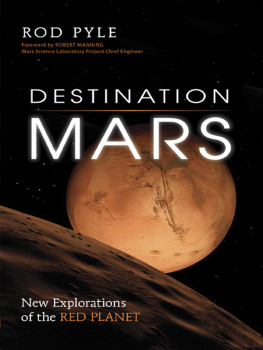Martian Summer
My Ninety Days with Interplanetary Pioneers, Temperamental Robots, and NASAs Phoenix Mars Mission
Andrew Kessler

For Lottie and Bobo
Contents
AUTHORS NOTE
T HIS IS A BOOK ABOUT MARS AND THE HUMANS THAT MAKE ROCKET science possible. This is not the most accurate account of this NASA mission. For that, youll want to review the science papers or other Mars-related literature. Instead, this is an account of winning the nerd lottery: The luckiest fanboy in fandom gets a shot to spend three months with unfettered access to Mission Control. Its just your average summer trying to capture the story of 130 of the worlds best planetary scientists and engineers exploring the north pole of Mars. Its a warts-and-all look at the Phoenix Mars mission from a regular guy who loves space.
PART I
THE PHOENIX
OF TUCSON
DATE: JUNE 04, 2007
T HE STORY BEGINS TWO MONTHS BEFORE THE LAUNCH OF THE Phoenix Mars Lander. One year before the landing. It takes ten months to fly at 74,000 mph to arrive on Mars. Its far.
The subject of the story is a Martian photographer.
Dont call me that, Peter Smith, the worlds greatest Martian Photographer says dryly. It really diminishes the science.
This is a story about the worlds greatest Mars picture-taker and his robot, Phoenix.
And dont make me look like some wacko mad scientist, Peter says. He has a hard enough time with the missions image as it is. Peter is particular about the missions image because he knows how getting it right has the potential to inspire children and adults alike. More than half his team is here because they grew up watching Apollo and Viking missions.
Whats going to inspire the next generation? he wants to know.
Were sitting in the back yard of Peters Tucson home. Were getting off on the wrong foot and I cant stop imagining Peter working in his Martian photo studio posing little aliens on the Red Planet. Stupid, I know.
Peter is intimidating. He is tallvery tallwith ashock of white hair, bushy eyebrows, big mustache, a robust Buddha-like belly and an alpha-malecowboy swagger. He towers over me and says little. Only grimacing and asking if Im sureIm up for the task, correcting me when I say things like Martian photographeror make other interplanetary gaffes. I blabber to fill the silence. Its not uncommon to feelthis way when you first meet the brilliant, geeky
Please dont make us look like geeks, either says the brilliant John Wayne of space.
Go collect some firewood for dinner, he says. I do it. When I return, Peter breaks the wood with his hands, starts a small fire, and tells me a story.
JUST FIVE HUNDRED YEARS AGO, MARS WAS A DOT, A SPECK OF LIGHT. Then came the first telescopes, and Mars ceased to be a dot. It became, instead, a world which scientists claimed was much like our own. Imaginations ran wild, and before long, rather than see vast, wonderful possibilities, we feared a Martian attack. As a war of the worlds loomed, Mars became a source of fear and anxiety.
It wasnt until our first stumblings into the solar system in the 1960s, when Mariner 4 snapped photos of Marss surface that we caught a glimpse of what it might actually be like. Rather than an advanced civilization poised for an attack, Mariner 4 showed us a lifeless, desolate place. A few years later, in the 1970s, Viking I confirmed those first impressions: Mars was nothing to fear. Just a dead planet; barely worth exploring. The missions stopped. The scientific dreamers lost sleep and became depressed.
Then a discovery in the 1990s changed everything. ALH84001, a piece of Mars ejected by a cosmic collision, was thrust through the solar system and somehow landed on Earth. It was found in Antarctica in 1984 but no one took much interest. When scientists at NASA finally cut it open to take a closer look, they found something shocking: evidence of life. Tiny microbes, simple little guys with evidence of a few of the basic structures of life, like a cell wall. It was the basic innards of something you might find in the extreme environments of the Earthsulfur vents at the bottom of the ocean, the dry valleys of Antarctica, or the Andean desert. Clearly there was more to discover on Mars. So, we headed back.
PETER SMITH IS A MASTER AT CONJURING THESE LITTLE MARS VIGNETTES. Thats not his only virtue or why were here. Peter built an excavator to operate on Mars. It took five years of construction and nearly a lifetime of dreams. In a few months, he will watch a Delta II rocket blast off into space carrying his 800-pound lander with a long arm that can dig into the surface of Mars. Past Mars missions toted along soup-spoon style digging equipment, but Phoenix brings a mini backhoe to do real interplanetary digging. His mission is called The Phoenix Mars Lander. Phoenix for short.
Peter builds cameras for space. Capturing the universe on film is a great gig. He built almost half of the cameras that have operated on Mars, and got to where he is by working his way up from research assistant to Mission Captainor Principal Investigator to NASA insiders. Its a classic photon-to-Charged-Coupled-Device story.
You might remember waking up one summer morning in 1997 to a well-cropped ocher-colored Martian landscape on the front page of your newspaper or computer screen. Remember? Peter took that image. His camera, fixed to a robot called Pathfinder, captured the alien landscape using a simple yet brilliant trick to get non-scientists to imagine themselves on Mars and bask in its glory.
His scientific images looked like tourist photos. And Peter, betting that scientists wouldnt be the only ones who wanted to look at them, made a secret handshake deal to thwart NASA protocol and post the images on the Internet as they came down from Mars. It was arguably the first ever viral marketing campaignundoubtedly the first for space. The traffic he brought to NASAs site nearly crashed the whole Internet. The coolness factor re-awakened a waning interest in not just the Red Planet, but space exploration itself.
This is Peters whole raison detre, as well as his gift of empathya rare trait among scientific minds: obsessed with discovery, but never forgetting to stop to smell the roses. Peter wants people to care about space and science, so he does everything possible to make it romantic and within arms length. Get through that gruff exterior, and Im just positive well find an old softy.
NOW PETER HAS TAKEN ON SOMETHING BIGGER. HE DIDNT JUST BUILD the cameras for this mission, hes the captain of this whole ship and he wont take no jive from no oneexcept NASA. They control his $420 million budget and can cut him off at any moment, if he goes rogue. Not that Im implying he would ever hijack a Mars lander.
Peter Smith invited me to his rocket-ship-shaped homea design rendered when he was a swinging space bachelorbecause he wanted to revive the great space narrative, begun a generation ago, but now in need of a new chapter. From our scant conversations before I arrived in Tucson, I learned he was looking for an outsider to join the mission and articulate to the world a story starring one lovable but tough-as-nails hero, Peter Smith, on one crazy, heroic, funtastic mission to explore the innards of another world.
This is our first face-to-face Mars accord. Peter wants someone on his mission thats not a brilliant scientist. Check. Hes got enough headaches with 130 of those. Hes looking for someone who might see Mars with a fresh approach and could write about it from a new perspective.

